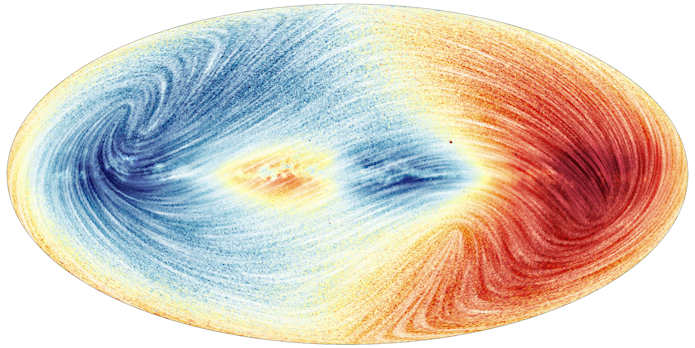
Flatiron Institute Partners With the European Space Agency for Latest Gaia Data Release
From its orbit hundreds of thousands of kilometers above Earth, the European Space Agency’s Gaia spacecraft has observed and mapped our galaxy’s stars with unprecedented detail since its launch in 2013. Today, ESA will release the latest batch of the mission’s data: data release 3 (DR3). For this release, the Flatiron Institute has joined the ESA as a partner data center and will host the full DR3 dataset for the public to access.
“Gaia is revolutionary for the sheer number of stars and other objects it surveys, but also in how it releases its data, providing open access to anyone with an internet connection,” says Adrian Price-Whelan, an associate research scientist at the Flatiron Institute’s Center for Computational Astrophysics (CCA) who helped make the partnership happen together with the institute’s Scientific Computing Core. “Partnering with ESA to share this data aligns perfectly with our mission at the CCA to maintain and share open datasets, and we couldn’t be more excited to help celebrate the achievements of this amazing survey.”

In addition to serving up the new data files, the Flatiron Institute is also hosting what it dubs the 2022 NYC Gaia DR3 Fête. At the event, participants will join together to make preliminary science-inspired visualizations of the Gaia DR3 data and build new scientific collaborations locally and globally. The Flatiron Institute previously hosted a similar event for the DR2 release, which led to a smorgasbord of discoveries from the origin of jumbo-size planets called “super Jupiters” to the nature of dark matter.
For astronomers, a Gaia release is like Christmas morning. Scientists worldwide will dive into the dataset, extracting new insights into our solar system, galaxy and universe. In total, DR3 includes measurements of almost 2 billion Milky Way stars, millions of galaxies and thousands of smaller objects such as asteroids and moons. The astronomers will use the data to reconstruct our home galaxy’s structure and evolution over billions of years to better understand the life cycle of stars and our place in the universe.
DR3 includes new information, such as chemical compositions, stellar temperatures, colors, masses, ages and the speed at which stars move toward or away from Earth. Much of this information was revealed by spectroscopy, a technique in which the starlight is split into its constituent wavelengths — just like how a prism creates a rainbow. The data also includes special subsets of stars, like those that change brightness over time.

Using the new data, astronomers with early access to DR3 have already gleaned new insights about strange “starquakes,” stellar DNA, asymmetric motions and other fascinating insights.
“Unlike other missions that target specific objects, Gaia is a survey mission. This means that while surveying the entire sky with billions of stars multiple times, Gaia is bound to make discoveries that other more dedicated missions would miss,” says Timo Prusti, project scientist for Gaia at ESA. “This is one of its strengths, and we can’t wait for the astronomy community to dive into our new data to find out even more about our galaxy and its surroundings than we could’ve imagined.”


